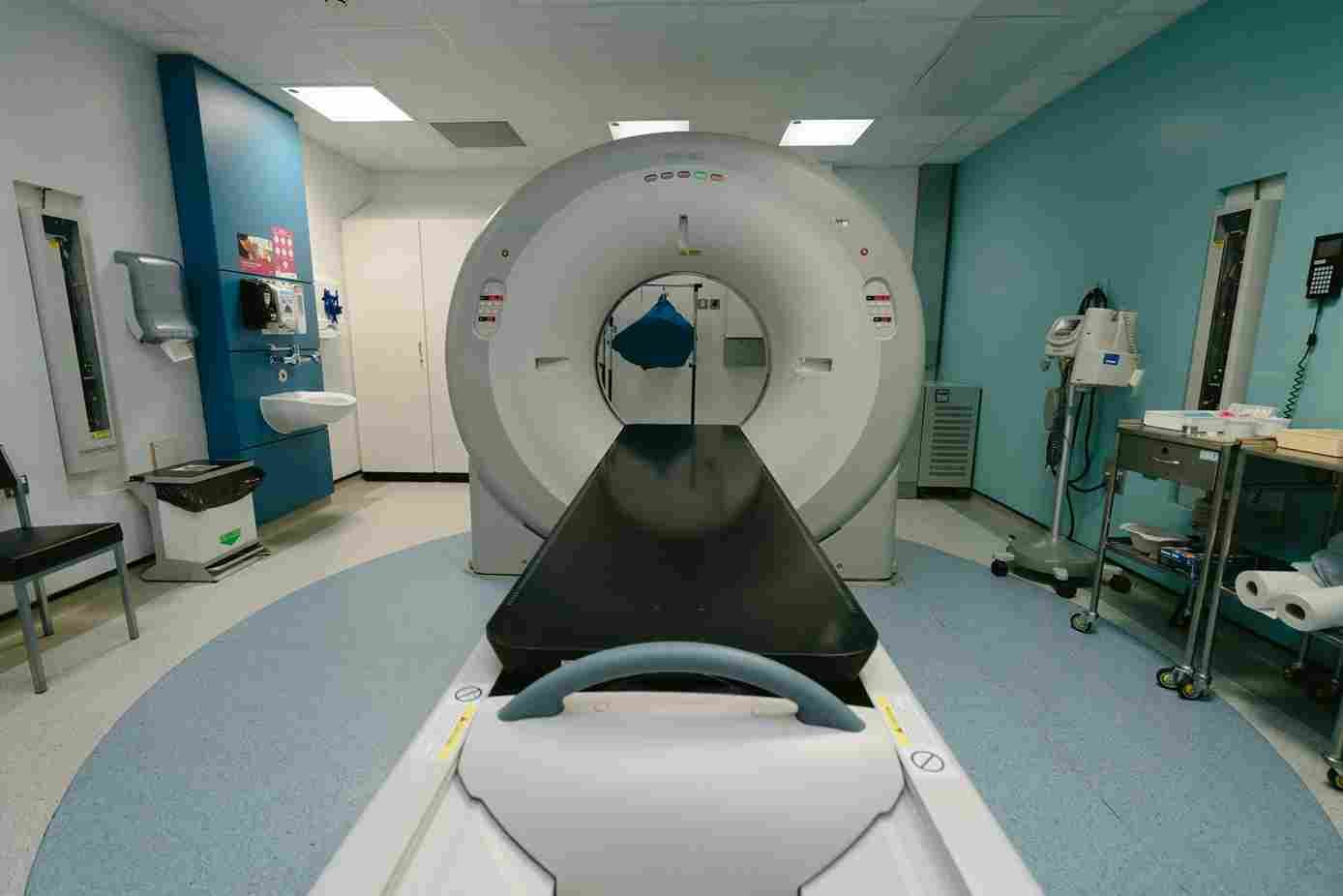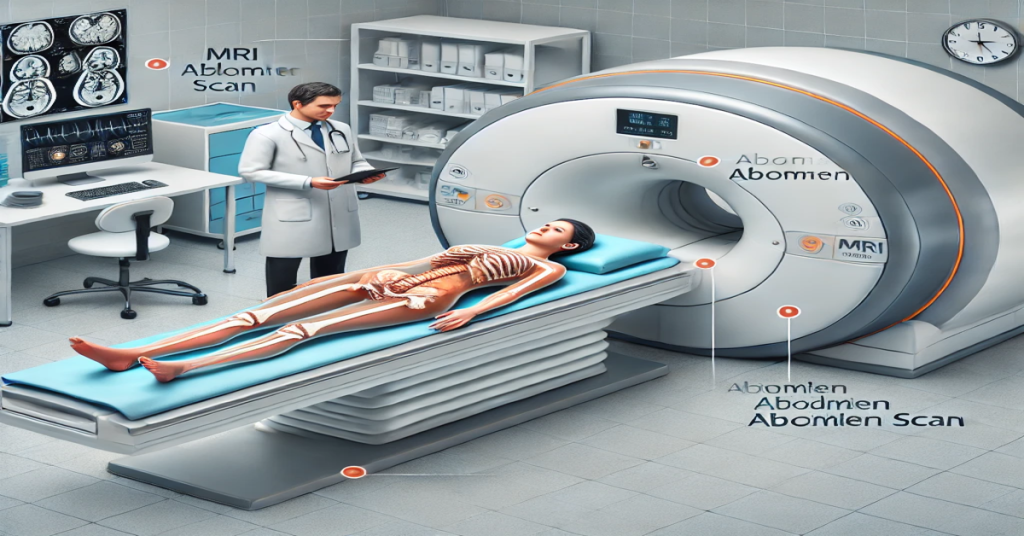|
Getting your Trinity Audio player ready...
|
Magnetic Resonance Imaging (MRI) is a non-invasive diagnostic technique that employs powerful magnets and radio waves to create detailed three-dimensional images of the internal structures of the human body. Radiologists use these images to identify abnormalities in soft tissues, which can aid in diagnosing a wide range of medical conditions.
Advantages of MRI Over Other Imaging Methods
MRI is particularly valued for its ability to produce high-resolution images without the use of ionizing radiation. Unlike CT (Computed Tomography) and PET (Positron Emission Tomography) scans, which expose patients to radiation, MRI relies solely on magnetic fields and radio waves. This makes it a safer option for many patients, including those who require repeated imaging.
Applications of Full-Body MRI Scans
A full-body MRI scan can detect a variety of conditions, including:
- Cysts and Tumors:
- A comprehensive screening can identify cysts, tumors, and other growths throughout the body. Early detection of these abnormalities is crucial for timely treatment.
- Inflammatory and Infectious Diseases:
- MRI can reveal signs of inflammation or infection, which may manifest as bleeding or swelling in soft tissues.
- Cardiovascular System Issues:
- Structural abnormalities such as aneurysms, hypertrophy (thickening of the heart muscle), damaged heart tissues, and irregularities in blood vessels can be identified with an MRI.
- Cancer Screening:
- MRI is often recommended for individuals at high risk of certain cancers, such as breast cancer, prostate cancer, or lung cancer. It can also detect metastases, which occur when cancer spreads to other organs.
- Neurological Conditions:
- Brain and spinal cord MRIs can diagnose conditions such as multiple sclerosis, stroke, or brain tumors.

MRI in Cancer Diagnosis and Treatment
MRIs play a significant role in oncology by providing detailed images that help in diagnosing and staging cancer. The high-resolution images enable radiologists to:
- Identify the location and size of tumors.
- Check for metastases.
- Guide biopsies, surgeries, and radiation therapy.
Precautions for MRI Patients
The strong magnetic field used in MRI scans necessitates certain precautions. Patients should inform their healthcare provider and MRI technician about any of the following conditions or devices:
- Implantable cardioverter-defibrillators (ICDs) and pacemakers.
- Cochlear implants.
- Neurostimulators for pain management or physical rehabilitation.
- Medication pumps (e.g., insulin pumps).
- Intrauterine devices (IUDs).
- Aneurysm clips.
- Dental implants, braces, or retainers.
- Metal fragments in the body, especially in the eyes.
- Permanent tattoos or face paint.
- Allergies to contrast dye.
- Artificial heart valves.
- Claustrophobia.
- History of cancer.
Also Read : The benefits of choosing the best aesthetics clinic in Dubai
Possible Side Effects of MRI Scans
While MRI scans are generally safe, some patients may experience side effects, particularly if contrast dye is used. Common reactions include:
- Swelling.
- Redness.
- Itching.
- Difficulty breathing (in rare cases).
If contrast dye is administered, patients may be monitored afterward for any adverse reactions. Additionally, doctors may provide specific post-MRI instructions tailored to individual cases.
Preparing for a Full-Body MRI
To ensure optimal results, patients should follow these guidelines:
- Medication: Continue taking prescribed medications unless instructed otherwise.
- Hydration: Avoid excessive fluid intake before the scan to prevent dehydration.
- Avoid Metal Items: Remove all metal objects, including watches, jewelry, and eyeglasses, as well as electrical devices such as phones. These items can interfere with the magnetic field.
Also Read : Best pigmentation removal cream for clear radiant skin
What to Expect During an MRI
Upon arrival, patients will be guided onto a comfortable examination bed. Once positioned, the bed will slide into the MRI scanner, which is shaped like a large doughnut rather than the confined tubes of earlier models. For patients with claustrophobia, technicians can provide support, such as calming measures or mild sedatives.
During the scan, patients must remain still to ensure clear images. They may be asked to perform simple tasks, such as holding their breath briefly. The scanner will emit a drum-like noise, which is entirely normal and indicates that the imaging process is underway.
Frequently Asked Questions (FAQs)
A full-body MRI typically takes 45 to 90 minutes, depending on the complexity of the scan and the areas being examined.
MRI is generally considered safe during pregnancy, particularly after the first trimester. However, it’s essential to inform the technician about your pregnancy.
Unless otherwise instructed, you can eat and drink normally before your MRI. However, for certain types of scans, fasting may be required.
No, MRI is a painless procedure. Some patients may feel slight discomfort from lying still for an extended period.
Yes, a companion can often wait outside the scanning room. In some cases, they may be allowed to accompany you, depending on the facility’s policies.
Inform the technician if you have claustrophobia. Open MRI machines or sedation options can help make the experience more comfortable.
Depending on your condition, alternatives like CT scans, ultrasound, or X-rays may be considered. Your doctor will recommend the best option for your specific needs.
By following these guidelines and understanding the process, patients can feel confident and prepared for their MRI scan. This advanced imaging technique continues to be a cornerstone in modern diagnostics, offering detailed insights that aid in the early detection and treatment of various medical conditions



